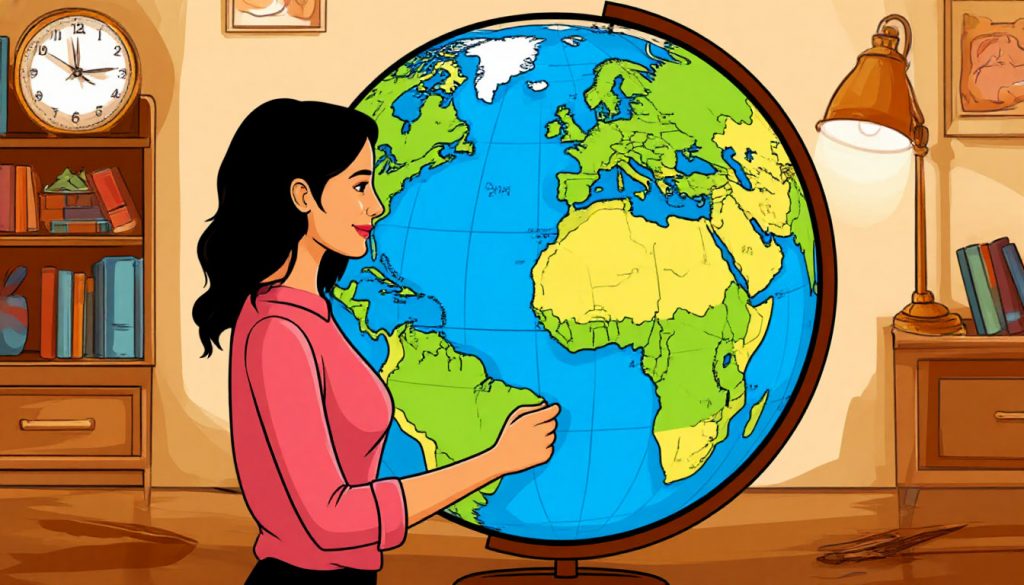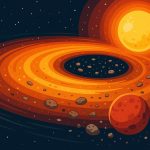If you could watch Earth from space, you’d see it constantly spinning on its axis — a full rotation every 24 hours. This rotation causes day and night, drives weather systems, and influences many natural processes. But have you ever wondered why Earth rotates at all? The answer lies in the physics of how our solar system formed and the principles of angular momentum.
The Birth of Rotation: From Clouds to Planets
Earth’s rotation began over 4.5 billion years ago, during the formation of the solar system. At that time, a giant cloud of gas and dust — called the solar nebula — began to collapse under its own gravity. As the cloud contracted, it started to spin, just like a figure skater spins faster when pulling in their arms.
Small particles within the spinning disk collided and stuck together, gradually forming larger bodies — including Earth. Because these forming planets inherited the rotational motion of the original cloud, Earth began spinning as it grew.
Why Earth Keeps Spinning
Once Earth started spinning, it kept going due to a law of physics known as the conservation of angular momentum. This principle states that an object will keep rotating unless something stops or changes its motion.
In the frictionless vacuum of space, there’s very little to slow Earth down. Although forces like tidal interactions with the Moon do cause slight deceleration, Earth’s spin remains remarkably stable. Over millions of years, the length of a day has increased slightly — from about 18 hours in the age of dinosaurs to 24 hours today — but the rotation itself continues.
The Role of the Moon
The Moon plays an important role in Earth’s rotation. Its gravitational pull causes tidal friction, which slowly transfers Earth’s rotational energy to the Moon’s orbit. As a result, the Moon is gradually moving away from Earth (about 3.8 cm per year), and Earth’s rotation is very slowly decelerating.
In the very distant future — billions of years from now — Earth may become tidally locked with the Moon, meaning one side of Earth will always face the Moon, just as the Moon always shows the same face to Earth today.
What Would Happen If Earth Didn’t Rotate?
If Earth suddenly stopped rotating, the consequences would be catastrophic:
- One side would face the Sun constantly, becoming extremely hot.
- The other side would freeze in perpetual night.
- Weather patterns and ocean currents would collapse.
- Earth’s magnetic field, generated by the spinning core, could weaken or vanish.
Thankfully, such a scenario is physically impossible under normal cosmic conditions.
Other Planets Rotate Too
Rotation is not unique to Earth. All the planets in the solar system rotate, although at different speeds and in different directions:
- Jupiter spins fastest — once every 10 hours.
- Venus spins backward (retrograde) and very slowly — once every 243 Earth days.
- Uranus rotates on its side, likely due to a massive impact early in its history.
These differences are the result of how each planet formed and what collisions or gravitational interactions they experienced over time.
Glossary
- Angular momentum: A property of rotating objects that keeps them spinning unless acted upon.
- Solar nebula: The cloud of gas and dust from which the Sun and planets formed.
- Tidal friction: The energy loss due to the gravitational pull between Earth and the Moon.
- Tidally locked: When one side of an object always faces another due to synchronized rotation.
- Retrograde rotation: Rotation in the opposite direction to a planet’s orbit.



I very lucky to find this internet site on bing, just what I was searching for : D also saved to fav.
Thank you!